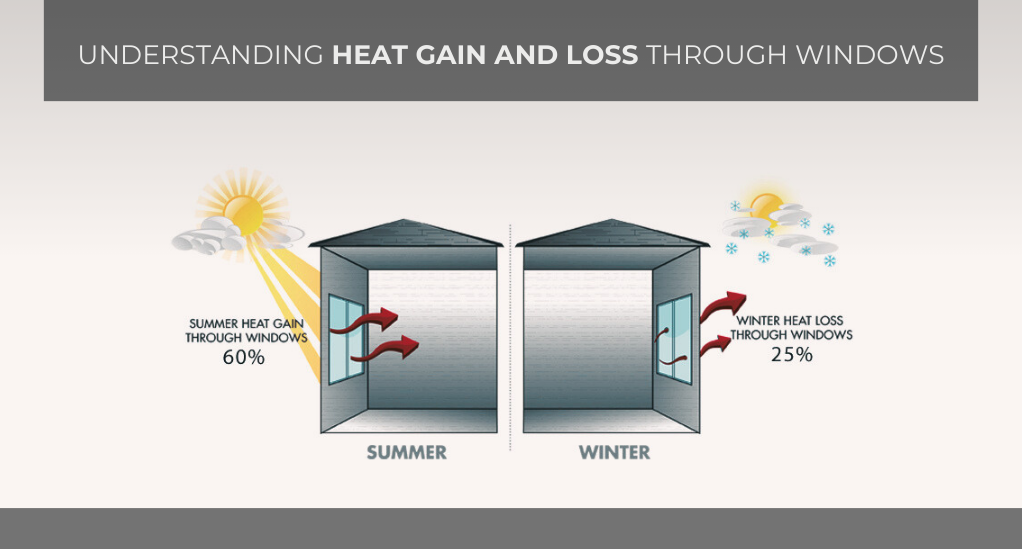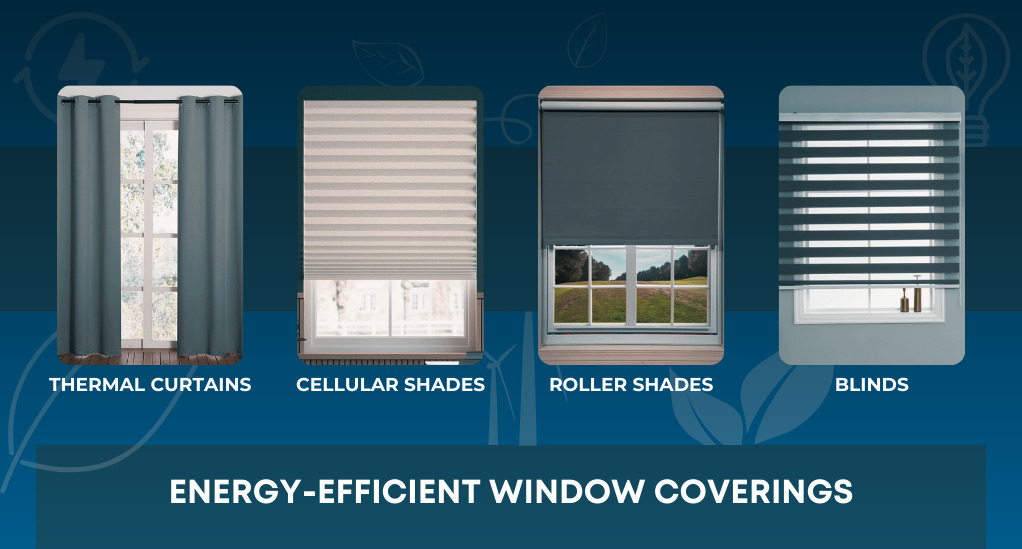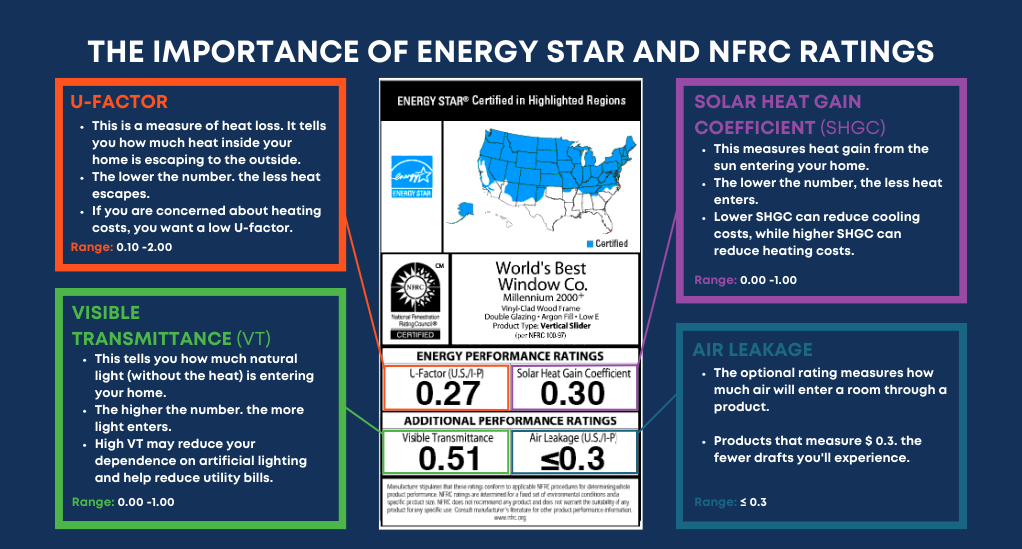
How to Reap the Benefits of Smart Window Treatments for Energy Savings and Privacy
In today’s age of technological advancements, homeowners are constantly seeking ways to enhance the comfort, security, and efficiency of their homes. One such innovation that has gained significant traction in recent years is smart window treatments. These are not just about aesthetics; they play a pivotal role in energy conservation and privacy enhancement. In this section, we’ll delve into the dual role of smart window treatments and understand why they are an essential consideration for modern homes.
The Dual Role: Energy Savings and Enhanced Privacy
Windows are the eyes of a home. They let in light, offer views, and provide ventilation. However, they can also be a source of energy loss and a potential breach of privacy. Smart window treatments address both these concerns effectively.
Energy Savings: Traditional windows, especially if they are old or not well-insulated, can be responsible for a significant amount of heat gain in the summer and heat loss in the winter. This not only affects the comfort levels inside the house but also leads to higher energy bills. Smart window treatments, equipped with sensors and automation, can adjust themselves based on the time of day, sunlight intensity, and even the room’s occupancy. This dynamic adjustment capability ensures optimal insulation, reducing the need for artificial heating or cooling.
Enhanced Privacy: In an age where privacy is a growing concern, having windows that can adjust their opacity or shading based on the time of day or the presence of people can be a game-changer. Imagine your bedroom window automatically turning opaque in the evening or the living room shades drawing themselves when you’re watching a movie. This automated control ensures that you always have the privacy you need without any manual intervention.
| Advantage | Description |
|---|---|
| Energy Conservation | Dynamic adjustments lead to reduced artificial heating/cooling, leading to energy savings. |
| Automated Privacy | Windows/shades adjust themselves based on various factors, ensuring privacy without manual input. |
| Aesthetic Appeal | Modern designs and seamless automation enhance the overall look and feel of the home. |
| Increased Home Value | Homes equipped with smart window treatments often have a higher market value. |
Why Consider Upgrading Your Window Treatments?
The reasons to consider upgrading to smart window treatments extend beyond just energy savings and privacy. They offer a seamless blend of functionality and aesthetics. With the integration of smart home systems, you can control these window treatments through voice commands, smartphone apps, or even integrate them with other smart home devices. For instance, during a hot day, your smart thermostat can communicate with your smart shades to lower them, keeping the room cool without overworking the air conditioner.
Moreover, as sustainability becomes a growing concern, homes that adopt energy-efficient practices not only contribute to a greener planet but also enjoy reduced utility bills. It’s a win-win!
The Energy Impact of Windows in Homes
Windows are more than just architectural elements that beautify our homes and provide views of the outside world. They play a significant role in the energy dynamics of a household. Understanding this impact is crucial for homeowners who aim to make their homes more energy-efficient and environmentally friendly.
Understanding Heat Gain and Loss Through Windows

Every homeowner has experienced it: the intense summer sun turning rooms into saunas or the chilling winter drafts that seem to seep through every crevice. A large part of this temperature fluctuation is due to the windows.
Heat Gain: During warmer months, sunlight penetrates windows and increases the indoor temperature. This phenomenon, known as solar heat gain, can cause air conditioning systems to work overtime, leading to increased energy consumption and higher utility bills.
Heat Loss: Conversely, in colder months, windows can become conduits for heat to escape from the inside of the home to the outside. This heat loss means that heating systems have to work harder to maintain a comfortable indoor temperature.
The Significance of Energy-Efficient Windows
Energy-efficient windows are designed to minimize unwanted heat gain and loss. They achieve this through multiple means:
- Multiple Panes: Most energy-efficient windows have two or more panes of glass. The space between these panes is filled with gases like argon or krypton, which act as insulators, reducing heat transfer.
- Low-E Coatings: These are microscopic layers of metallic oxides that reflect infrared light (heat) while allowing visible light to pass through. This means rooms remain bright without the added heat.
- Warm Edge Spacers: These are used to keep the multiple panes of glass apart in a window. Energy-efficient windows use spacers that reduce heat flow and prevent condensation.
- Improved Frame Materials: Frames made from materials like vinyl, fiberglass, or wood composites offer better insulation compared to traditional aluminum frames.
The Bottom Line
Windows play a pivotal role in the energy dynamics of a home. By understanding the science behind heat gain and loss and by investing in energy-efficient windows, homeowners can significantly reduce their energy bills, enhance indoor comfort, and contribute to a more sustainable future.
Improving Efficiency of Existing Windows
While the allure of brand-new, state-of-the-art windows is undeniable, not every homeowner is in a position to replace their existing windows. Fortunately, homeowners can take several measures to boost their current windows’ efficiency, ensuring optimal energy conservation and comfort.
Detecting and Sealing Air Leaks
One of the primary culprits of energy loss in homes is air leakage through windows. These leaks allow warm air to escape during winter and cool air to seep out during summer, leading to increased energy consumption.
Steps to Detect Air Leaks:
- Visual Inspection: On a windy day, hold a lit incense stick or a thin piece of tissue paper close to the window seams. If the smoke wavers or the tissue flutters, there’s a leak.
- Hand Test: On a cold day, run your hand around the window’s edges. If you feel cold air coming in, there’s a breach.
Once detected, these leaks can be sealed using weatherstripping or caulk, both of which are readily available at hardware stores.
The Role of Caulking and Weatherstripping
Caulking: This is a waterproof filler and sealant used to seal gaps in stationary parts of a window. It’s perfect for sealing gaps between the window frame and the home’s siding.
Weatherstripping: This is used for the moving parts of windows. It’s a material that acts as a barrier, preventing air from entering or escaping.
Energy-Efficient Window Coverings

Beyond the structural aspects of the window, the coverings or treatments you choose can also play a significant role in energy efficiency.
- Thermal Curtains: These are made of multiple layers, including a vapor barrier and a reflective film, to insulate the room.
- Cellular Shades: Their honeycomb structure traps air, acting as an insulator.
- Roller Shades: When made of reflective materials, they can reduce heat gain during summer.
- Blinds: While they offer less insulation, they provide excellent control over light and ventilation.
Advanced Solutions for Existing Windows
For those looking to go a step further, there are advanced solutions that can be added to existing windows:
- Storm Windows: These are installed outside or inside the main window and act as an additional barrier, reducing air movement.
- Solar Control Film: This is a thin layer that reflects UV rays, reducing heat gain.
- Exterior Shading: Awnings, overhangs, and external blinds can prevent excessive sunlight, reducing the need for cooling.
Advanced Solutions for Window Efficiency
In the quest for optimal window efficiency, homeowners often look beyond traditional methods to incorporate advanced solutions that offer superior energy savings and comfort. These cutting-edge treatments and technologies not only enhance the performance of windows but also add a modern aesthetic appeal to homes. Let’s delve into some of these advanced solutions and understand their benefits.
The Benefits of Storm Windows and Panels
Storm windows and panels serve as an additional layer of protection against the elements. They can be installed on the interior or exterior of existing windows.
Key Advantages:
- Enhanced Insulation: By creating an air space between the primary window and the storm window, they act as an insulating barrier, reducing heat transfer.
- Noise Reduction: They can significantly reduce external noise, creating a quieter indoor environment.
- Cost-Effective: Compared to full window replacements, storm windows are a more affordable solution to improve energy efficiency.
Solar Control Film: A Game-Changer
Solar control films are thin layers applied to the interior surface of windows. Made from polyester or vinyl, they are treated with various coatings to achieve desired properties.
Benefits:
- Reduction in Heat Gain: These films reflect a significant portion of the sun’s rays, reducing the amount of heat entering the home.
- UV Protection: They block up to 99% of UV rays, protecting interiors from fading and reducing the risk of skin-related issues for inhabitants.
- Glare Reduction: By cutting down on the amount of sunlight that penetrates the window, they reduce glare, making indoor spaces more comfortable.
Exterior Shading Solutions
Exterior shading devices, such as awnings, blinds, and overhangs, are not just decorative elements. They play a crucial role in controlling the amount of sunlight that reaches the windows.
Types of Exterior Shading:
- Awnings: Roof-like structures over windows, awnings block sunlight and retract as needed.
- Exterior Blinds: Stronger than indoor blinds, you can adjust them to control incoming light.
- Overhangs: These are permanent structures that extend over windows, providing shade.
Choosing to Replace: What to Consider
There comes a time in the lifespan of every home when window treatments and enhancements might not suffice, and a full window replacement becomes necessary. This decision, while significant, can lead to substantial long-term benefits in terms of energy savings, comfort, and home value. However, the process of choosing and replacing windows requires careful consideration. In this section, we’ll guide you through the essential factors to keep in mind when embarking on this journey.
When is it Time to Replace Your Windows?
Recognizing the signs that your windows need replacement is the first step. Here are some indicators:
- Persistent Drafts: Even after sealing and weatherstripping, if you feel drafts, it might be time for a replacement.
- Difficulty in Operation: Windows that are hard to open, close, or lock have likely outlived their usefulness.
- Condensation: If you notice condensation between double or triple pane windows, it indicates a seal failure.
- Visible Damage: Warping, rotting, or broken frames are clear signs that a replacement is in order.
Decisions to Make: Navigating the Choices
Window replacement is not a one-size-fits-all solution. Several factors come into play, and understanding them ensures you make the best choice for your home.
- Frame Types: The material of the window frame affects its durability, maintenance, and insulation. Common options include wood, vinyl, aluminum, and fiberglass.
- Glazing Type: This refers to the glass used in the window. Options range from single to triple glazing, with choices in between like double glazing with gas fills for added insulation.
- Gas Fills and Spacers: Some energy-efficient windows have spaces between panes filled with gases like argon or krypton, which act as insulators. Spacers keep these panes apart and play a role in insulation.
- Operation Types: How do you want your window to open? Choices include double-hung, casement, sliding, and more.
The Importance of ENERGY STAR and NFRC Ratings

When choosing windows, certifications and ratings can guide you to the most energy-efficient options.
- ENERGY STAR Label: Windows with this label meet strict efficiency guidelines set by the U.S. Environmental Protection Agency. They’re tested and certified to ensure they deliver energy savings without compromising performance.
- NFRC (National Fenestration Rating Council) Ratings: This independent entity provides unbiased performance ratings, helping consumers compare products. Key metrics include U-factor (insulation effectiveness) and Solar Heat Gain Coefficient (how well the window blocks heat from sunlight).
Maximizing Privacy with Smart Window Treatments
In the modern era, where urbanization has led to homes being built closer together, privacy has become a paramount concern for many homeowners. While windows connect us with the outside world, they can also, unfortunately, compromise our privacy. Thankfully, advancements in window treatments now allow homeowners to enjoy the benefits of natural light without sacrificing their seclusion. In this section, we’ll explore various smart window treatments designed to bolster privacy.
Privacy-Enhancing Window Coverings and Films
Window coverings and films have evolved significantly over the years, offering not just aesthetic appeal but also enhanced privacy features.
- Frosted and Tinted Films: These films obscure the view from the outside, ensuring that prying eyes can’t see into your home. They allow light to filter through, ensuring rooms remain well-lit without compromising on privacy.
- Top-Down Bottom-Up Shades: A versatile choice, these shades can be adjusted from both the top and bottom. This design allows homeowners to let in light while keeping the more private parts of their rooms concealed.
- Smart Glass: A revolutionary technology, smart glass can change from transparent to opaque with the touch of a button. This transition is achieved through the application of an electrical current, providing instant privacy when needed.
The Role of Adjustable Shading Solutions
Adjustable shading solutions offer homeowners the flexibility to control the level of privacy they desire at different times of the day.
- Motorized Blinds and Shades: With the advent of smart home technology, blinds and shades can now be controlled remotely. Whether it’s through a smartphone app or voice command, adjusting your window treatments has never been easier.
- Layered Treatments: Combining sheer curtains with blackout drapes or using dual roller shades allows homeowners to switch between complete privacy and filtered light.
- Plantation Shutters: These classic window treatments come with louvers that can be adjusted to control both light and visibility. Their solid structure also offers an added layer of privacy.
Integrating with Smart Home Systems
Modern window treatments can be integrated seamlessly with smart home systems. This integration allows for automated adjustments based on various factors:
- Time of Day: Set your window treatments to lower during the evening or at specific times when you desire more privacy.
- Sunlight Intensity: Sensors can detect the intensity of sunlight and adjust window treatments to prevent glare while maintaining privacy.
- Room Occupancy: With motion sensors, window treatments can automatically close when someone enters a room, ensuring privacy.
Ensuring Proper Installation for Optimal Performance
The best window treatments and advanced solutions can only perform at their peak when they are installed correctly. Proper installation is paramount to ensure that windows and their treatments function as intended, providing the desired energy efficiency, comfort, and privacy. In this section, we’ll delve into the importance of professional installation and the common pitfalls homeowners should avoid.
Why Professional Installation Matters
While some homeowners might consider tackling window installation themselves, compelling reasons support choosing professionals.
- Expertise: Professionals have the training and experience to handle various window types, sizes, and treatments. They can anticipate challenges and address them effectively.
- Tools and Equipment: Professionals use specialized tools for precise installation, ensuring they complete the job correctly.
- Warranty Protection: Many window manufacturers validate warranties only when certified professionals handle the installation.
- Time-Efficiency: With their expertise, professionals can complete the installation faster and with fewer errors than an inexperienced individual.
Common Pitfalls to Avoid During Window Treatment Installation
Even with professional installation, being aware of potential pitfalls can ensure the process goes smoothly:
- Incorrect Measurements: This is a fundamental error that can lead to ill-fitting windows or treatments, compromising their efficiency and function.
- Overlooking Insulation: Proper insulation around the window frame is crucial to prevent drafts and energy loss.
- Improper Sealing: Incorrectly sealed windows can let in moisture, causing mold growth and structural damage.
- Mismatched Treatments: Not all window treatments are suitable for every type of window. It’s essential to choose treatments that complement the window’s design and function.
Post-Installation Care
Once the installation is complete, regular maintenance ensures longevity and optimal performance:
- Regular Cleaning: Dust and debris can affect the function of window treatments. Regular cleaning keeps them in top shape.
- Periodic Inspections: Over time, wear and tear can lead to minor issues. Periodic inspections can identify these problems before they escalate.
- Follow Manufacturer Guidelines: Always refer to the manufacturer’s guidelines for care and maintenance to ensure the treatments last long and function effectively.
Conclusion
In the modern era of sustainability and technological advancements, smart window treatments have emerged as a pivotal solution for homeowners seeking both energy efficiency and enhanced privacy. From understanding the energy dynamics of windows to exploring advanced solutions and emphasizing the importance of professional installation, the journey to optimal window efficiency is multifaceted.As urbanization continues and the need for energy conservation grows, these innovative window solutions not only promise reduced energy bills and increased comfort but also contribute to a greener, more sustainable future. Equipped with this knowledge, homeowners can make informed decisions and ensure their homes remain comfortable, private, and efficient sanctuaries.


Leave a Reply